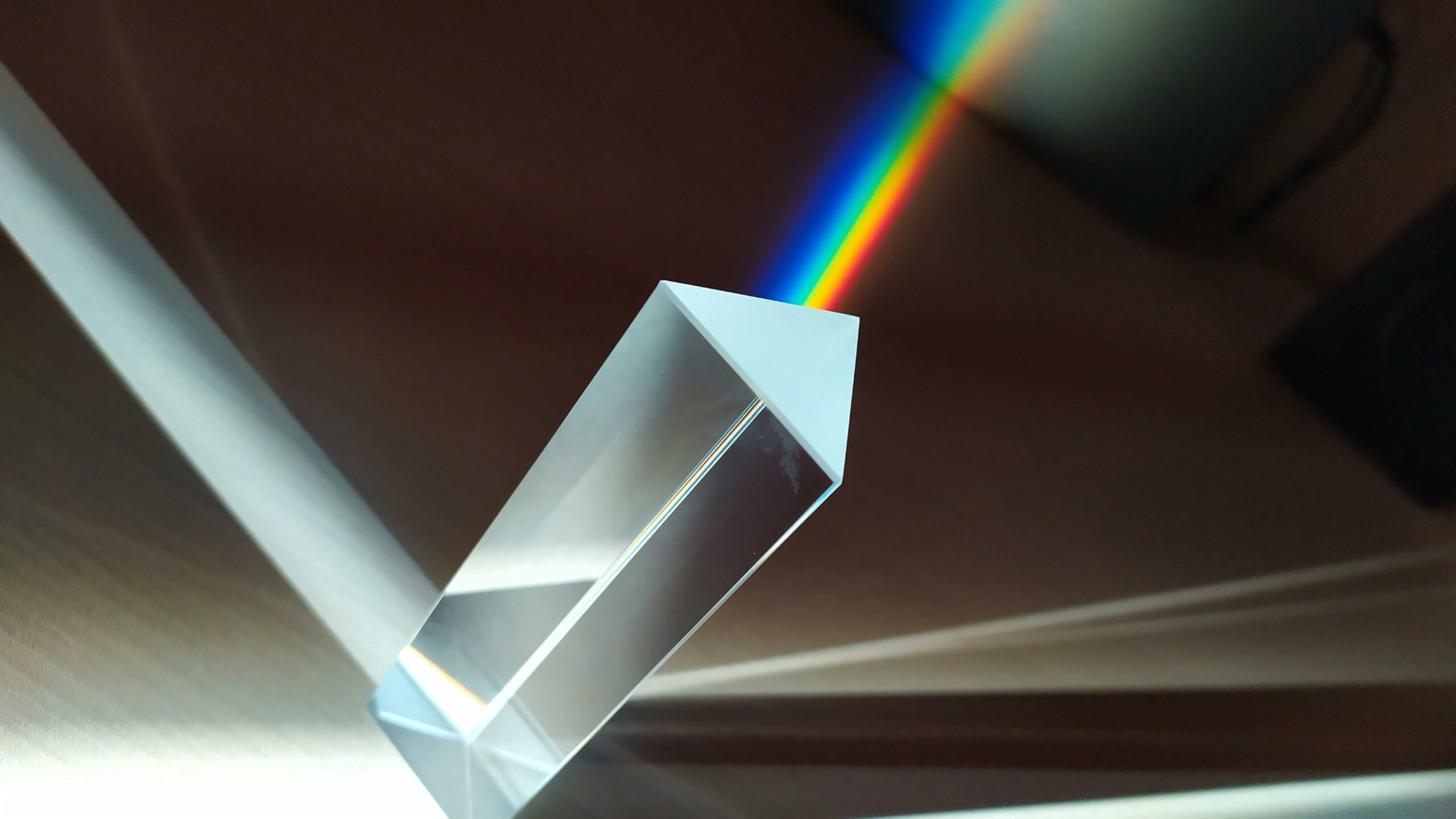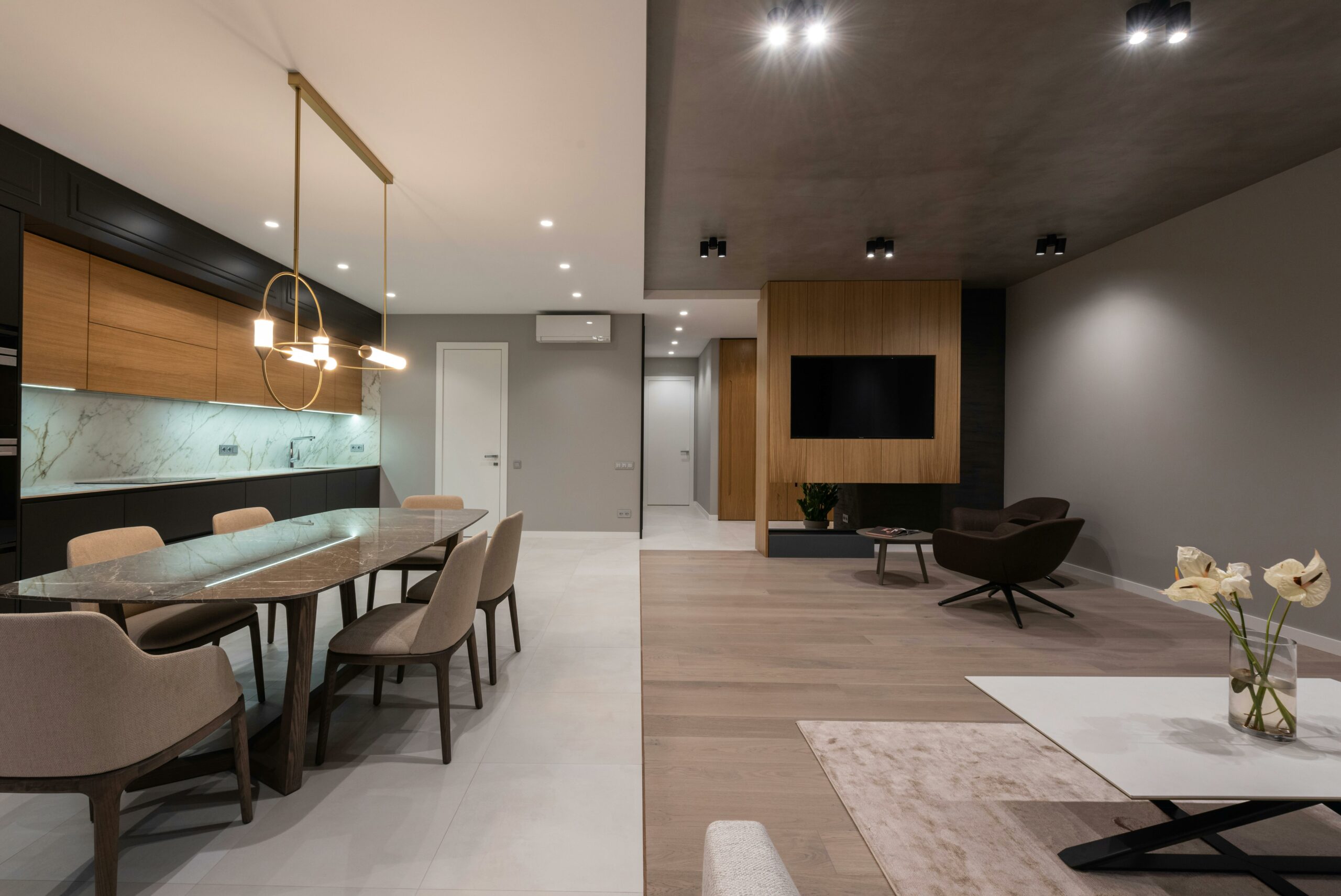
談及照明問題時,照度不足似乎是大家最先提到的困擾。確實,長時間在光線不足的環境中工作容易造成眼睛疲勞,因此通常是照明設計中的首要考量。然而,您知道嗎?在照明設計中還有一個同樣重要但常被忽略的問題——眩光。
與我們合作的設計師常分享他們的經驗,許多業主在項目完工後,反映燈光雖然漂亮,但長時間下來卻不夠舒適,特別是因為眩光的影響。這不僅降低了視覺感受,甚至會影響日常生活和工作效率。
眩光是照明設計中一個隱形的殺手,無論在居家空間或商業場域中,過強或不均的光線分佈都容易被忽視,最終導致光環境缺乏應有的舒適度。
When discussing lighting issues, insufficient illumination seems to be the most common concern. Indeed, working in poorly lit environments for extended periods can cause eye strain, making it a primary focus in lighting design. However, did you know there’s another equally important but often overlooked issue in lighting design—glare?
Designers we collaborate with often share their experiences, noting that many clients, after project completion, mention that while the lighting looks beautiful, it becomes uncomfortable over time, particularly due to glare. This not only diminishes the visual experience but can also impact daily life and work efficiency.
Glare is a hidden danger in lighting design. Whether in residential or commercial spaces, overly strong or uneven light distribution is easy to overlook, ultimately leading to a lack of comfort in the lighting environment.
Why Does Glare Occur?
為甚麼會形成眩光?

眩光(Glare)是指因為視野中的亮度分佈不均或亮度過高所引起的不適感。當眼睛接收到過多亮光或是遇到明暗對比過大的光源時,便會感到不適,這就是眩光的典型表現。眩光的危害在於它不僅影響視覺舒適性,還會破壞整體空間氛圍,讓辛苦打造的設計大打折扣。
眩光的類型可以大致分為三種:直接眩光、反射眩光和不舒適眩光。
.直接眩光(Direct Glare)
這是最常見的眩光類型,通常發生在光源直接進入視野的情況下。當光源沒有適當遮擋,或安裝位置不當時,直接眩光會干擾視覺,特別是在辦公室、餐廳等功能性空間中更為明顯。
.反射眩光(Glare by Reflection)
反射眩光發生在光線經過高反射性表面(如玻璃、金屬或光滑材料)反射後進入視野的情況。這種眩光往往被設計師忽視,尤其在選擇高光澤材質時。雖然這類材料能增添視覺上的光澤感,但同時也增加了反射眩光的風險。
.不舒適眩光(Discomfort Glare)
這種眩光雖然不會影響物體的可見度,但卻會讓使用者感到視覺不適,在長時間使用的情況下,更容易導致眼睛疲勞。不舒適眩光常見於燈具亮度過高或空間亮度分布不均的情況下,長期下來會對使用者的身心健康造成隱形的負擔。
我們必須得先了解每一種眩光的特性,才可以知道怎麼去針對眩光進行有效的控制和預防。
Glare refers to the discomfort caused by uneven or excessively high brightness in a visual field. When the eyes receive too much light or are exposed to stark contrasts between bright and dark areas, discomfort arises—this is a typical manifestation of glare. The harm of glare lies not only in reducing visual comfort but also in disrupting the overall ambiance of a space, diminishing the impact of well-crafted designs.
There are three main types of glare: direct glare, reflected glare, and discomfort glare.
.Direct Glare
This is the most common type of glare, usually occurring when a light source directly enters the field of vision. When the light source is not properly shielded or installed inappropriately, direct glare can interfere with vision, especially in functional spaces like offices or restaurants.
.Reflected Glare
Reflected glare occurs when light is reflected off high-reflectivity surfaces (such as glass, metal, or glossy materials) and enters the field of vision. This type of glare is often overlooked by designers, particularly when choosing high-gloss materials. Although these materials can enhance visual sheen, they also increase the risk of reflected glare.
.Discomfort Glare
While this type of glare does not affect the visibility of objects, it causes visual discomfort for the user. Over time, discomfort glare can lead to eye strain, especially in environments where the light is too bright or unevenly distributed. Prolonged exposure to discomfort glare can impose a hidden burden on users’ physical and mental health.
We must first understand the characteristics of each type of glare in order to effectively control and prevent it.
Unified Glare Rating for Indoor Lighting Fixtures
室內照明燈具統一眩光指數(UGR)
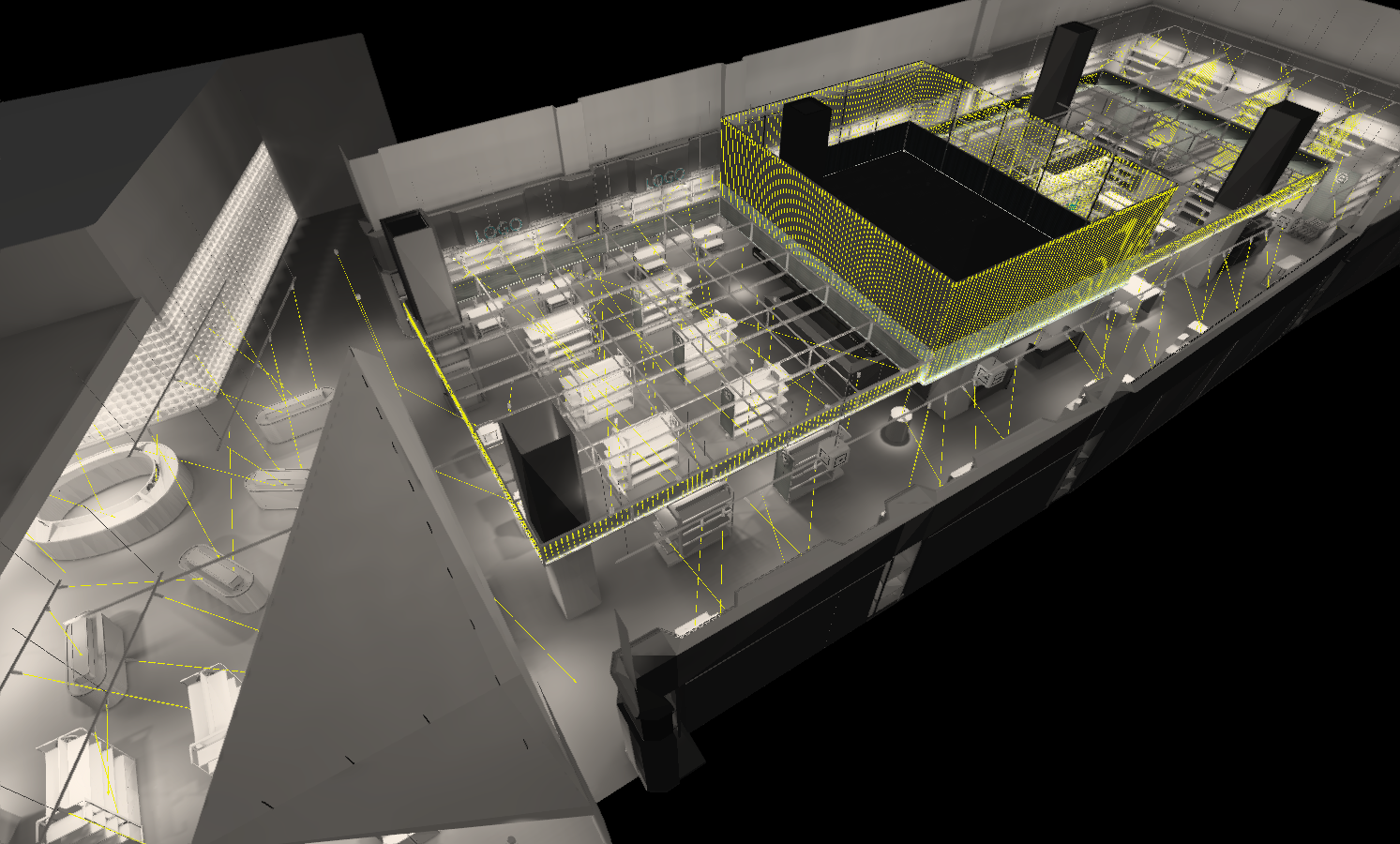
為了協助設計師更有效地控制眩光,國際照明委員會(CIE)提出了室內照明燈具統一眩光指數(Unified Glare Rating,UGR),以衡量照明設備對視覺舒適性的影響。
UGR 作為一個標準化的評分系統,分數範圍通常在 10 到 30 之間,其數值越低,代表眩光越少,空間的視覺環境也越加舒適;數字越高,表示眩光越強,照明環境越不舒適。UGR 指數分布可以表達出個人感官上的不同感受:
.UGR ≤ 10
無感知眩光,照明環境非常舒適。不過在主觀感受上可能會感覺環境有點暗。
.UGR 10-16
有輕微眩光,但照明環境還是屬於舒適範圍。而且在主觀感受上其實也是最舒適的炫光範圍。
.UGR 16-22
中等眩光,可能會對工作或活動產生一定影響。長期下來,視覺感受也會開始感覺到疲倦。
.UGR 22-28
有明顯眩光,視覺會感到不適。
.UGR ≥ 28
屬於嚴重眩光,可能會干擾視覺活動。
To help designers control glare more effectively, the International Commission on Illumination (CIE) introduced the Unified Glare Rating (UGR) to measure the impact of lighting equipment on visual comfort.
UGR is a standardized rating system, typically ranging from 10 to 30.
The lower the value, the less glare is present, resulting in a more comfortable visual environment. Conversely, a higher number indicates stronger glare and a less comfortable lighting environment.
The UGR scale can be used to express different levels of subjective glare perception. Specifically:
.UGR ≤ 10
No perceptible glare; the lighting environment is very comfortable. However, subjectively, the space might feel slightly dim.
.UGR 10-16
Slight glare, but the lighting environment remains within the comfortable range. This is also the most comfortable glare range in terms of subjective perception.
.UGR 16-22
Moderate glare, which may affect work or activities. Over time, visual fatigue may start to set in.
.UGR 22-28
Noticeable glare; visual discomfort is likely.
.UGR ≥ 28
Severe glare, which may interfere with visual tasks.
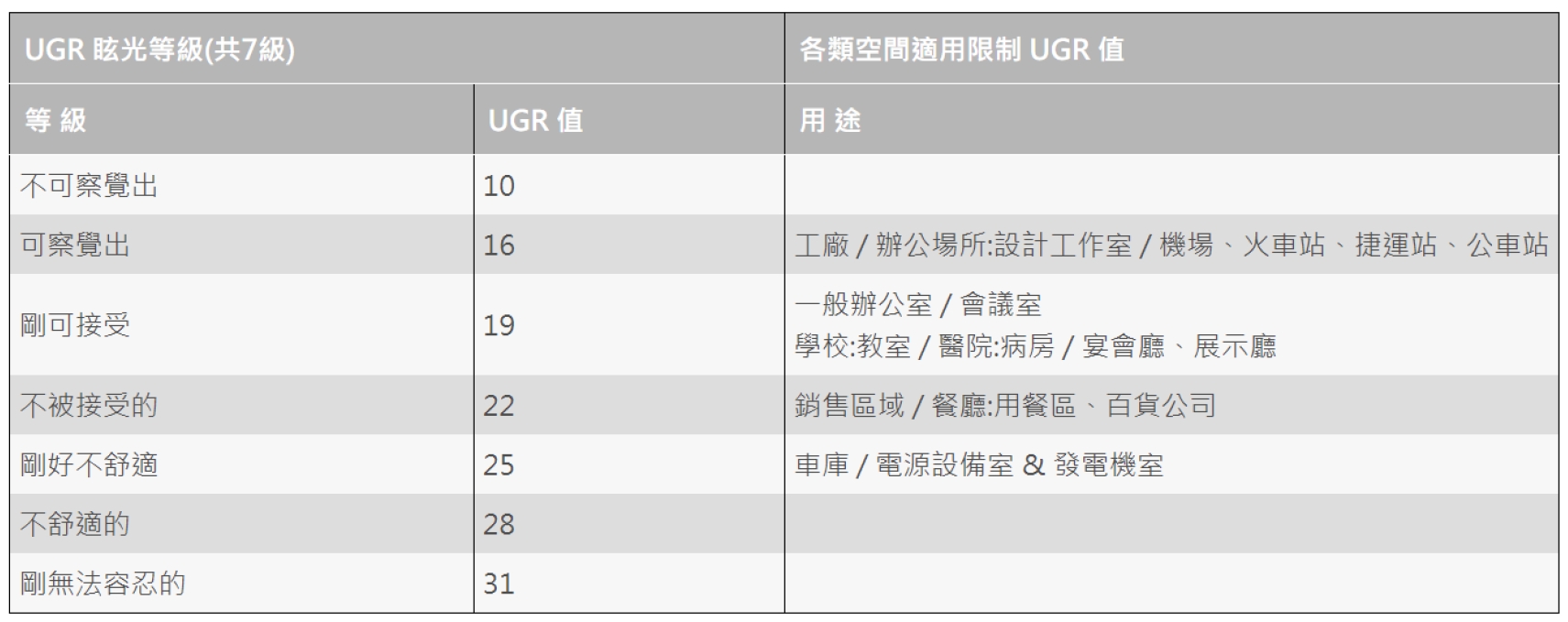
UGR 通常用於辦公室、學校、醫院、商業空間等對照明質量要求較高的場所。不過請注意, UGR 在應用上也是有一些嚴格的條件限制:
.UGR 適用於簡單立方體形房間的照明設計,不適用於間接照明或發光天棚的空間。
.燈具應採用雙對稱配光,以減少不均勻亮度帶來的眩光。
.觀察者的位置應選取在房間的中點,視線水平朝前。
符合以上條件能確保其評估結果的準確性,照明設計師也能根據正確的 UGR 指數,選擇合適的光源和設計方式,以控制眩光,提高工作環境的舒適度。
例如,在辦公環境中,UGR 通常被要求控制在 19 以下,這樣的照明環境不會對員工的視覺造成明顯負擔,而在一些高精度工作的場景(如設計工作室或手術室),UGR 可能需要更低,以確保最佳視覺條件。
UGR is commonly used in spaces with high lighting quality requirements, such as offices, schools, hospitals, and commercial areas. However, it’s important to note that UGR has certain strict conditions for its application:
.UGR is applicable to lighting designs in simple cubical rooms and is not suitable for spaces with indirect lighting or luminous ceilings.
.Luminaires should use double symmetrical light distribution to minimize glare caused by uneven brightness.
.The observer’s position should be located at the midpoint of the room, with their line of sight level and forward-facing.
Meeting these conditions ensures the accuracy of UGR evaluations, allowing lighting designers to select appropriate light sources and design methods based on correct UGR values to control glare and improve the comfort of the working environment.
For instance, in office environments, UGR is typically required to be kept below 19, ensuring that the lighting does not impose a significant visual strain on employees. In settings where high precision is required, such as design studios or operating rooms, an even lower UGR may be necessary to ensure optimal visual conditions.

如何利用UGR指數有效控制眩光?
掌握UGR指數後,設計師可以採取一系列措施來有效控制眩光,並提升空間的視覺舒適度。這需要精密的規劃與專業的技術支持,以下是一些常見且有效的解決方案:
.選擇柔和的光源
透過使用擴散罩或霧面玻璃等材料,可以將強烈的光源轉化為柔和的間接光,有效減少眩光對眼睛的刺激。此外,選擇具有適當遮光角的燈具,也是降低眩光的重要手段,從而提升整體空間的舒適感。大於30° 的遮光角被認為是商業空問合理的設计,45° 是最舒適的設計。
.調整燈具的布置與角度
適當調整燈具的安裝位置與角度,避免光線直射進入視野,能顯著減輕眩光問題。例如,將燈具安裝在視線範圍外,或選擇具有遮光特性的燈具,能有效控制光線的分佈,減少視覺上的不適。一般情況下遮光角較大的燈具能有效防止「直接眩光」。
How to Effectively Control Glare Using the UGR Index?
Once designers grasp the UGR index, they can take a series of steps to effectively control glare and enhance the visual comfort of a space. This requires precise planning and professional technical support. Below are some common and effective solutions:
.Choose Soft Light Sources
By using materials such as diffusers or frosted glass, intense light sources can be transformed into soft, indirect light, effectively reducing glare and minimizing eye strain. Additionally, selecting fixtures with appropriate shading angles is a key measure for reducing glare and improving the overall comfort of the space.A shielding angle greater than 30° is considered reasonable for commercial space design, while 45° is the most comfortable design.
.Adjust the Layout and Angle of Fixtures
Properly adjusting the installation position and angle of fixtures to prevent direct light from entering the line of sight can significantly mitigate glare issues. For instance, installing fixtures outside the visual range or choosing fixtures with shading characteristics can effectively control light distribution and reduce visual discomfort.In general, luminaires with a larger shielding angle can effectively prevent direct glare.
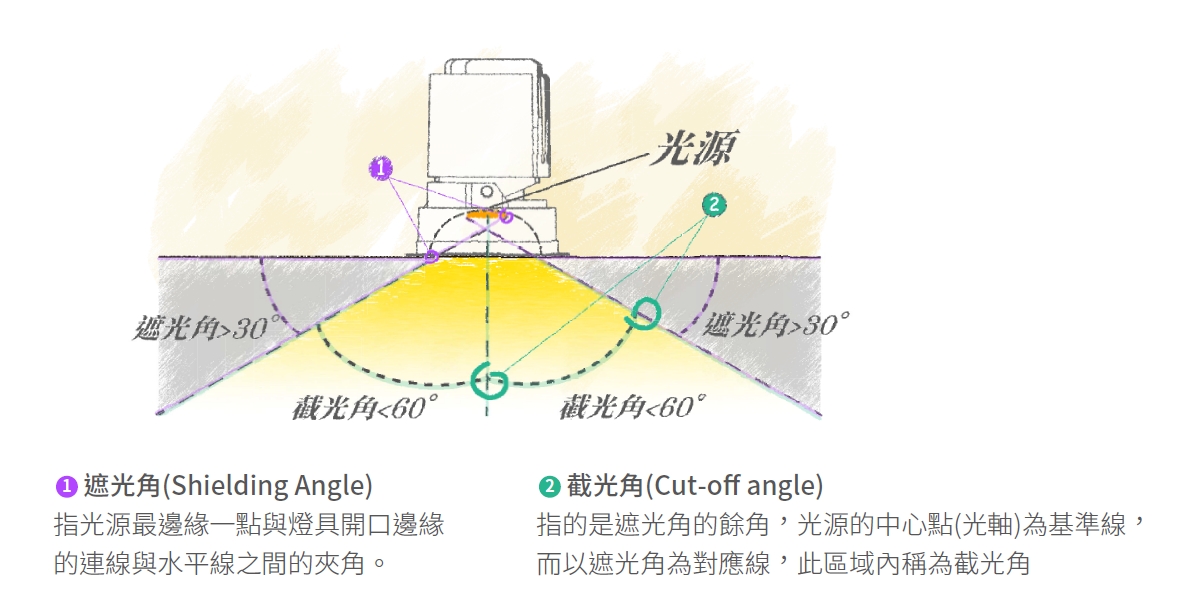
.均衡環境光線
利用間接照明和反射光來平衡光源,避免強烈的明暗對比,是提升視覺舒適度的關鍵。透過合理分佈光源,使光線在空間中均勻分佈,減少視覺疲勞。
.減少反射眩光
使用啞光材質來降低反射光,能避免光幕反射和二次眩光。這不僅可以提升空間的視覺對比度,還能減少光線在高光澤表面上產生的不必要反射。特別是在高光澤的空間設計中,正確選擇低光澤度的表面材質至關重要。
.控制燈具亮度
選擇亮度適中的燈具,能避免過亮光源直接映入眼簾,從而減少對眼睛的刺激。控制燈具的亮度,結合適當的光源分佈,可以大幅提升照明的舒適性。
這些措施看似簡單,但在實際操作中往往需要專業經驗與技術支持,才能精確執行並達到最佳效果。
.Balance Ambient Lighting
Utilizing indirect lighting and reflected light to balance light sources and avoid strong contrasts between light and dark is crucial for improving visual comfort. By distributing light sources evenly throughout the space, visual fatigue can be minimized.
.Reduce Reflective Glare
Using matte materials to reduce reflective light can help avoid screen reflections and secondary glare. This not only enhances the visual contrast of the space but also reduces unnecessary reflections on glossy surfaces. This is especially important in spaces with high-gloss designs, where choosing low-gloss surface materials is essential.
.Control Fixture Brightness
Selecting fixtures with moderate brightness can prevent overly bright light sources from directly entering the eyes, reducing eye strain. Controlling the brightness of fixtures, combined with proper light distribution, can significantly improve lighting comfort.
Though these measures may seem simple, in practice, they often require professional expertise and technical support to execute precisely and achieve optimal results.
UGR Application Ranges
UGR應用建議範圍
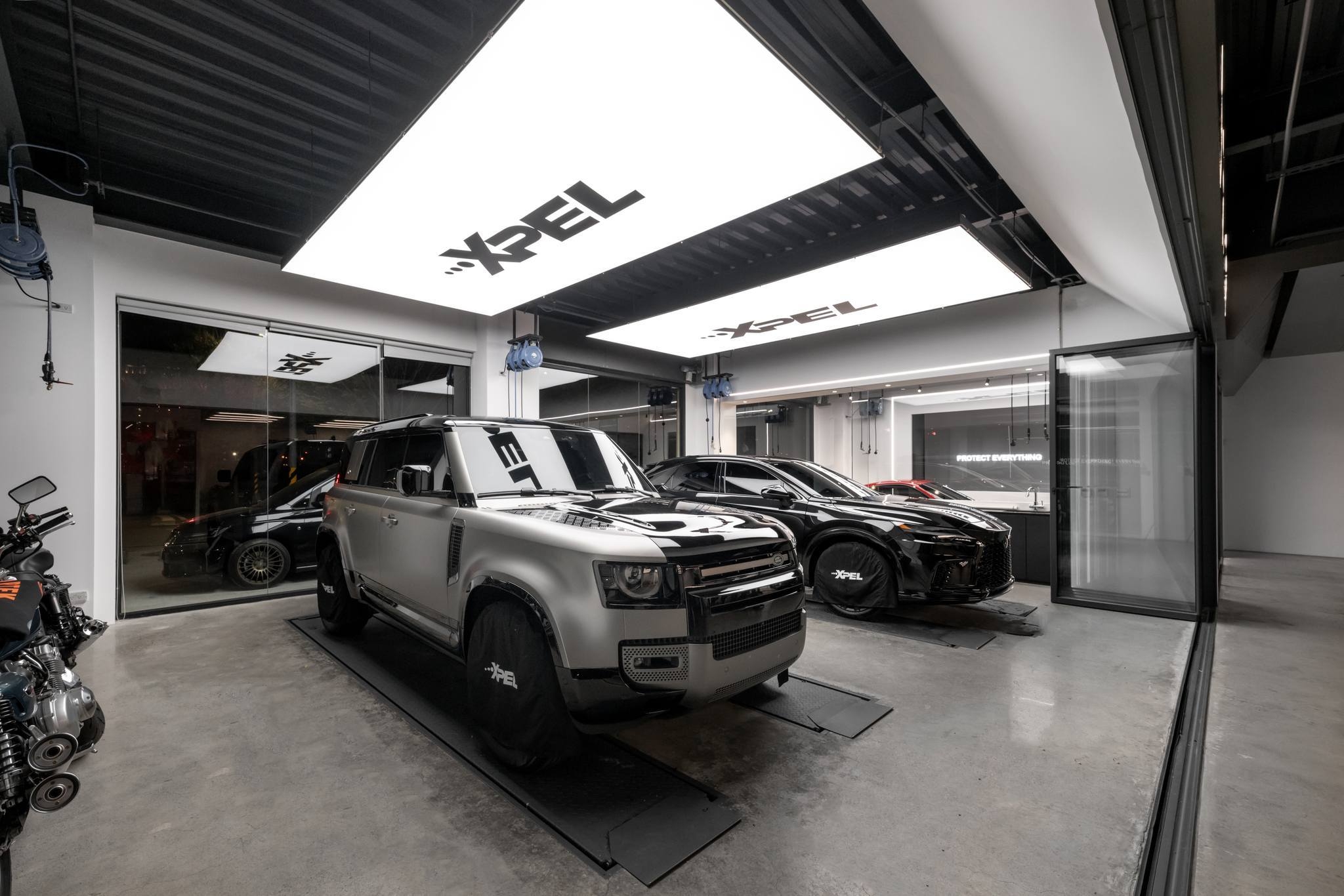
車庫 UGR < 28
Garage UGR < 28

一般室內 UGR ≤22
General indoor spaces UGR ≤ 22

一般辦公室 UGR ≤ 19
General offices UGR ≤ 19
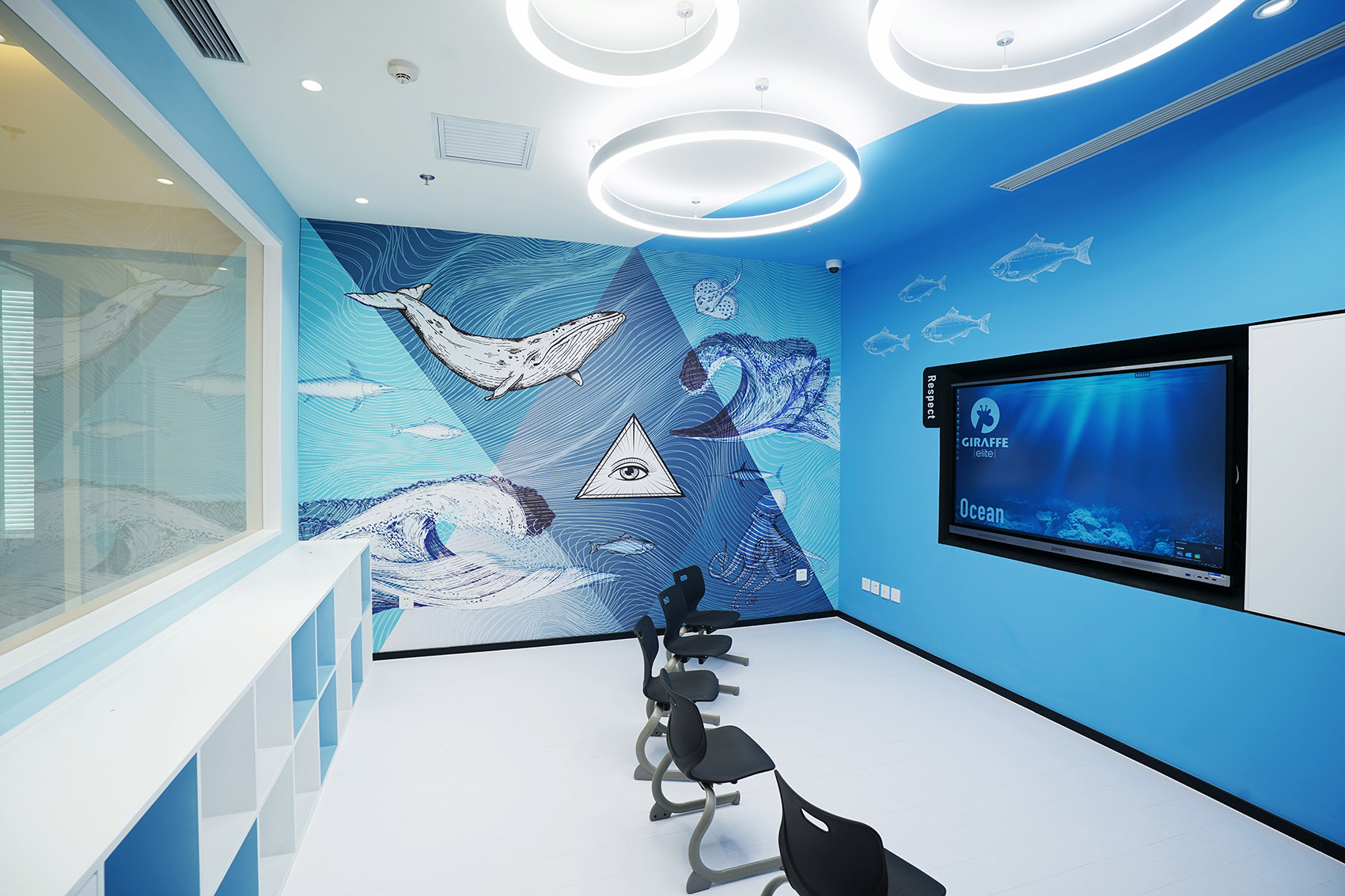
學校教室 UGR ≤ 16
School classrooms UGR ≤ 16
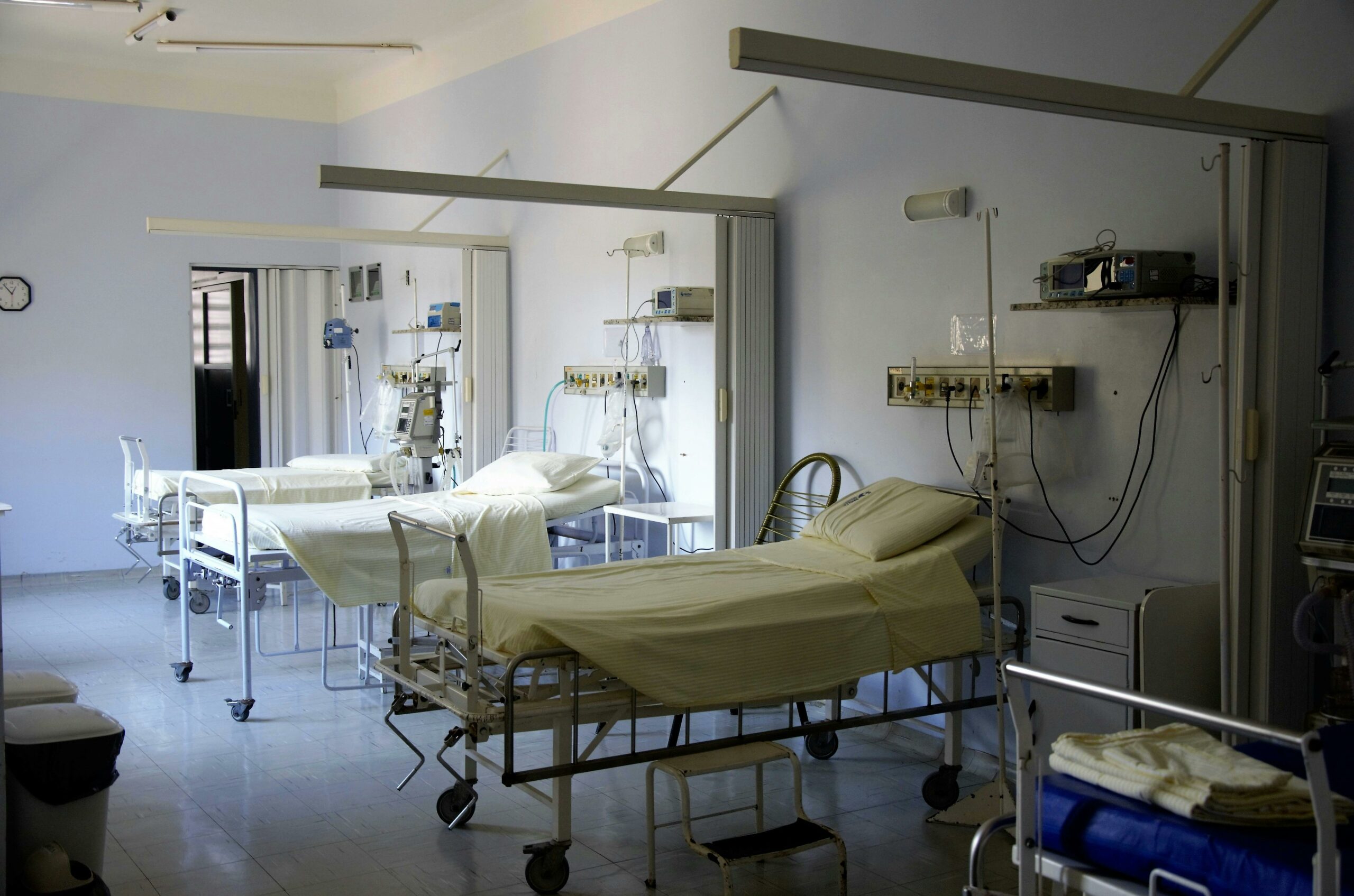
病房 UGR ≤ 13
Hospital wards UGR ≤ 13

手術演示室 UGR ≤ 10
Operating rooms and demonstration rooms UGR ≤ 10
Professional Lighting Planning
專業照明規劃的重要性

眩光控制的複雜性常被低估。許多業主專注於燈具的外觀和基本功能,卻忽略了視覺環境的舒適度。在照明設計中,統一眩光值(UGR)是一個關鍵參數,通過專業的計算和合理的燈具配置,設計師可以有效避免眩光問題,提供均勻舒適的光環境。
而我們的專業照明規劃團隊在項目初期就針對空間形狀、燈具布局及材料反射率進行精確分析,確保設計符合CIE標準。調整燈具的配光與遮光角度,以減少眩光影響,提升空間整體的視覺效果。
作為專業的照明規劃公司,我們能提供量身定制的解決方案,不僅改善光環境質量,還能讓照明成為空間設計中的亮點。雖然眩光控制是一項挑戰,但憑藉豐富的經驗和專業技術,我們能夠與設計師攜手打造更為舒適且符合需求的光環境。
The complexity of glare control is often underestimated. Many owners focus on the appearance and basic functionality of lighting fixtures while overlooking the comfort of the visual environment. In lighting design, the (UGR is a key parameter. Through professional calculations and reasonable fixture configurations, designers can effectively mitigate glare issues and provide a uniform and comfortable lighting environment.
Our professional lighting planning team conducts precise analyses of factors such as space shape, fixture layout, and material reflectance rates from the early stages of a project to ensure that the design meets CIE standards. By adjusting the distribution of light and the shielding angles of fixtures, we can minimize the impact of glare and enhance the overall visual quality of the space.
As a professional lighting planning company, we offer tailored solutions that not only improve the quality of the lighting environment but also allow lighting to become a highlight of the spatial design. While glare control presents a challenge, our rich experience and professional expertise enable us to collaborate with designers to create a more comfortable and needs-oriented lighting environment.
希望本文能幫助您更好地掌握眩光控制,為設計帶來啟發。
I hope this article helps you better understand glare control and inspires your design work.
光譜與全光譜:自然光的祕密
What Is a Spectrum?什麼是光譜? What Is …
亮度怎麼決定?您是否也有這類困擾?
How Many Watts Are Bright Enough?幾…

